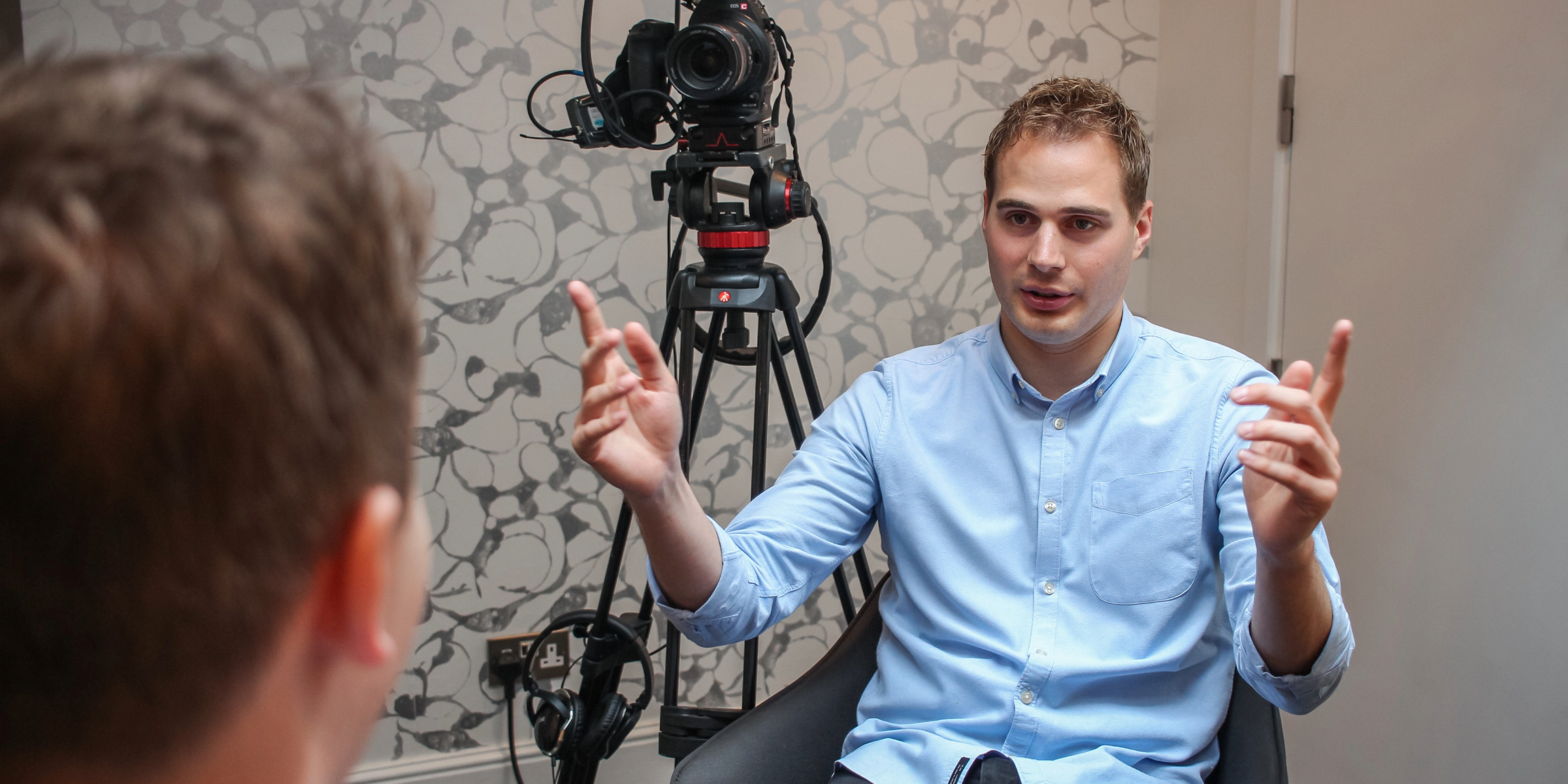Radio PR, radio days, radio studio days….whatever label you give to a PR campaign involving radio the number of listeners you can reach is massive, with nearly 48 million people in the UK tuning into the medium each week. So how can we in the PR industry best use technology to exploit this potential?
In this blog I’ll tell you how we ensure top quality when outside broadcasting and how we have set up our own one-day station. Since Shout! Communications is a specialist broadcast PR agency we have our own professionally built and installed radio studio.
If you have ever worked with us on a radio day or broadcast campaign, you would’ve seen our professional studio complete with sound proof booth and mixing desk. The mixing desk is a piece of equipment that the microphones plug into so the sound engineer can adjust levels, to avoid distortion.
During radio days we normally have two microphones connected to the desk. This allows two (or sometimes more) speakers to be in the studio. The desk also has inputs from our various means of connecting to the BBC and commercial, national and local radio stations, who are conducting the interviews. This is perhaps the most important job the mixing desk does, as it allows our speakers to hear the presenters on the other side.
Key parts of our studio operations:
ISDN line: This is a type of phone line that delivers very high-quality audio to the broadcasters. ISDN is used widely across the radio industry with all the main players, including the BBC, Wireless Group, Bauer and Global all using it for live guests who can’t get to the studio.
ISDN is a digital line, compared to a normal analogue phone line. This means higher-quality sound can travel down the line via use of a piece of kit called a Codec.
ISDN lines can run various different Codecs. Codecs are basically a software that compresses a digital stream and sends it in a smaller file size. This allows for a fast transfer of a file (a phone call) and fast unpacking of it to its original quality. Codecs most often used in ISDN calls are G722 and APTX.
Both are used widely across the radio industry. At Shout! Communications we have equipment that can use both, so it doesn’t matter what Codec the radio studio use we can still get through to them. In our studio and during radio days we use a Codec unit that has both ISDN capabilities and ‘normal’ phone call capabilities.
Another key part of our studio operations, especially during radio days, is the capacity to record interviews. We use a programme called Pro Tools, which can isolate tracks to enable us to record ‘clean’ feeds. The programme also records a ‘stereo mix’; this is when it combines the clean feeds of the phone line and also our microphones, typically what you would hear if you were listening to the radio.
Our studio is also perfectly suited to recording podcasts and we do this often. We have a producer mic on the outside of the booth so we can feedback to the presenter/ spokesperson during and after takes.
Taking the radio studio on location
We also have a portable unit which is can be taken outside of a studio for a live Outside Broadcast, or as they’re most commonly called, an OB. Most recently we used this whilst at the Caravan and Motorhome show at the NEC in Birmingham. All you need (and I know it’s not as easy as it sounds!) is internet access and you’re ready to go.
But what if you don’t have an ISDN line? More and more ISDNs are being phased out with BT announcing last year they will be unavailable to purchase from 2020. The alternative? The internet.
Apps such as Facetime, WhatsApp & Skype all send high quality audio. Some stations have even done away with professional recorders such as a Marantz or Zoom. They have now turned their attention to new smartphones. Often you can see them in the media scrum (the gathering of reporters around a spokesperson/ celebrity) with an iPhone and a microphone cover on it. The use of such devices is hugely reducing the need for expensive professional equipment.
These days journalists (not the radio presenters) will often call you on another line ie your home phone or office phone and get you to record the questions they are asking you into your iPhone. Or sometimes they will contact you on Facetime (if you have an Apple device) and record it their end.
Interested in a radio day? Then give us a call on 0207 240 7373 to discuss your next campaign. Or read more about how to run a successful radio campaign by downloading our E-Book



